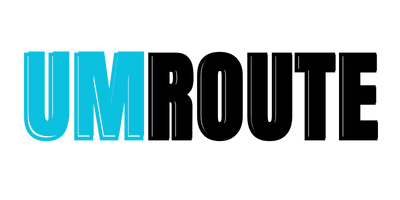Selecting the right tools for your hiring tech stack is a consequential decision in today’s fast-paced, candidate-driven recruitment environment. The technologies you choose not only accelerate time-to-hire and increase recruiter productivity but also ensure a memorable candidate experience and enable sustained organizational growth. As recruitment best practices continuously evolve, taking a close look at modern hiring tech stack solutions is an excellent way to start your modernization journey and set your team up for future success.
This comprehensive guide offers an in-depth framework for assembling a strategically robust hiring technology stack. From pinpointing areas of inefficiency to considering integration, compliance, and adaptability for future scaling, we also explore how building a well-structured recruiting tech stack can unify these elements into a cohesive system that streamlines workflows and improves collaboration across teams. Whether you are a solo recruiter at a fast-growing startup or an HR leader overseeing transformation at a large enterprise, investing wisely in your recruitment tools empowers your team to deliver exceptional hiring outcomes and supports candidates at every stage of their journey.
Understanding Your Recruitment Needs
Before investing in new recruitment tools, it’s crucial to conduct a comprehensive assessment of your organization’s unique challenges, bottlenecks, and long-term hiring objectives. Begin by meticulously mapping your current workflow—from talent sourcing and application intake to interview coordination, offer acceptance, and onboarding. Evaluate where inefficiencies often arise: are candidates dropping off at the screening stage, are recruiters overwhelmed by manual scheduling, or are hiring managers struggling with feedback loops? The goal is to understand not only where friction exists but also the underlying causes that impede effective hiring. Engaging stakeholders, particularly frontline recruiters and hiring managers, ensures you surface insights that generic solutions might miss. Collect both qualitative and quantitative feedback, and prioritize solutions that directly address the highest-impact pain points. By thoroughly diagnosing your recruitment process, you lay a solid foundation for intelligent, future-proof technology investments.
Core Components of a Hiring Tech Stack
A modern hiring tech stack comprises several interconnected solutions, each tailored to optimize a specific phase of the recruitment funnel. The key components include:
- Applicant Tracking System (ATS):Serving as the recruitment backbone, an ATS centralizes all candidate information, automates manual tasks such as parsing resumes, and streamlines the scheduling process. With a well-configured ATS, recruiters gain real-time visibility into candidate pipelines, eliminating email clutter and missed steps.
- Candidate Relationship Management (CRM): CRM tools are essential for building and maintaining robust pipelines of both passive and active candidates. These solutions enable HR teams to nurture relationships through timely communication, fostering long-term engagement and supporting vital talent initiatives, including employer branding and campus outreach.
- Sourcing Tools: Proactive sourcing platforms empower recruiters to search beyond applications, uncovering candidates through AI-driven recommendations, social media, and resume databases. Effective sourcing ensures an ongoing influx of top-tier talent, helping to fill hard-to-hire roles more quickly.
- Assessment Tools: Integrating skills and psychometric assessment platforms provides an objective, standardized, and data-rich perspective into each candidate’s abilities and culture fit. Automated assessments expedite initial evaluations and eliminate unconscious biases from the process.
- Onboarding Software: Comprehensive onboarding platforms facilitate a smooth transition for new hires. These solutions automate paperwork, centralize documentation, and deliver structured training modules, ensuring new employees integrate quickly and positively from day one.
Integration and Automation
When selecting recruitment technologies, prioritize solutions that natively integrate with your existing HR systems, communication platforms, and productivity software. Integrations eliminate data silos, prevent errors, and reduce time wasted on redundant manual entry. For instance, bi-directional sync between your ATS and HRIS ensures a seamless handoff from recruitment to employee onboarding. Automation is equally transformative—by automating routine activities such as scheduling, candidate status updates, resume parsing, and background checks, recruiters are freed to focus on relationship-building and strategic evaluation. Not only does this drive consistency and speed, but it also enhances transparency and minimizes human error. A fully integrated, automated tech stack enables talent acquisition teams to operate at the highest level of efficiency, regardless of hiring volume.
Data-Driven Decision Making
An advanced hiring tech stack equips your team with actionable analytics, enabling you to transition from gut-feel decisions to continually optimized, evidence-based hiring. Look for platforms featuring customizable dashboards and granular reports on time-to-fill, cost-per-hire, source effectiveness, and diversity metrics. Track every step of the funnel to pinpoint weaknesses and test new strategies. These insights empower recruiters and HR leaders to make informed decisions, reallocate resources, and demonstrate the ROI of their talent acquisition strategies to executive teams. Moreover, leveraging historical data reveals patterns surrounding successful hires and identifies opportunities to refine employer branding, outreach, and sourcing channels. The result is a culture of continuous improvement, guided by real numbers rather than assumptions.
Scalability and Flexibility
Recruiting technology must flex with your organization’s ambitions. Cloud-based, modular solutions ensure that your tech stack remains nimble, whether you’re navigating seasonal hiring surges, entering new markets, or scaling from a dozen hires to hundreds each month. Tools that allow feature add-ons, integrations with external partners, or multi-regional support are critical for growing companies. Assess platforms for their ability to evolve without forcing costly reimplementation or disruptive downtime. By prioritizing scalability and flexibility, you safeguard your team’s productivity as your business requirements and talent needs evolve over time.
Enhancing Candidate Experience
In a fiercely competitive job market, a positive candidate experience distinguishes exceptional organizations. Your hiring tech stack should be engineered to create a seamless journey for all applicants: think intuitive, mobile-friendly application forms, frequent and transparent communication, and self-service scheduling options. Automation should support—not detract from—personalized interactions, such as tailored outreach or real-time status updates. Deliver prompt feedback and maintain transparency throughout the hiring process to minimize candidate frustration. A well-designed system not only attracts and converts top talent but also turns every applicant into a brand ambassador. Remember, outstanding candidate experiences fuel referral programs, elevate your employer reputation, and ultimately drive better business outcomes.
Security and Compliance
Handling sensitive personal data means security and compliance must be at the forefront of any hiring technology choice. Adherence to legal frameworks, such as GDPR, CCPA, and national data privacy laws, is mandatory, not optional. Insist on platforms that offer robust data encryption, role-based access, comprehensive audit trails, and features for obtaining candidate consent and managing data retention. Evaluate vendors based on their security certifications and transparency in response protocols. A proactive approach to compliance not only mitigates legal risk but also builds candidate trust, which is a valuable differentiator in increasingly privacy-conscious talent markets.
Continuous Evaluation and Improvement
The most effective hiring tech stacks are never stagnant; they evolve in response to team feedback, technological advancements, and marketplace dynamism. Establish regular feedback loops with hiring managers, recruiters, and candidates to gather insights into the usability and performance of the tool. Conduct periodic audits to ensure new releases, patches, or integrations deliver genuine value without introducing inefficiencies or vulnerabilities. Stay up to date with industry shifts—such as artificial intelligence, remote hiring solutions, or emerging integrations—so your recruitment processes remain cutting-edge. Continuous improvement ensures you get the highest return from your investment and keeps your hiring function competitive and agile.
- Zimatejigemo – Unlocking the Fusion of Creativity, Identity, and Innovation!
- Tinaypimatelate – The Revolutionary Concept Shaping the Future of Innovation!
- Limhuloxidpov – A Complete Guide to Understanding This Unique Concept!
- Zaxtexporoz – Exploring the Emerging Concept of Innovation and Digital Transformation!
- Lekulent – The Breakthrough Wellness Solution Taking the Health World by Storm!






